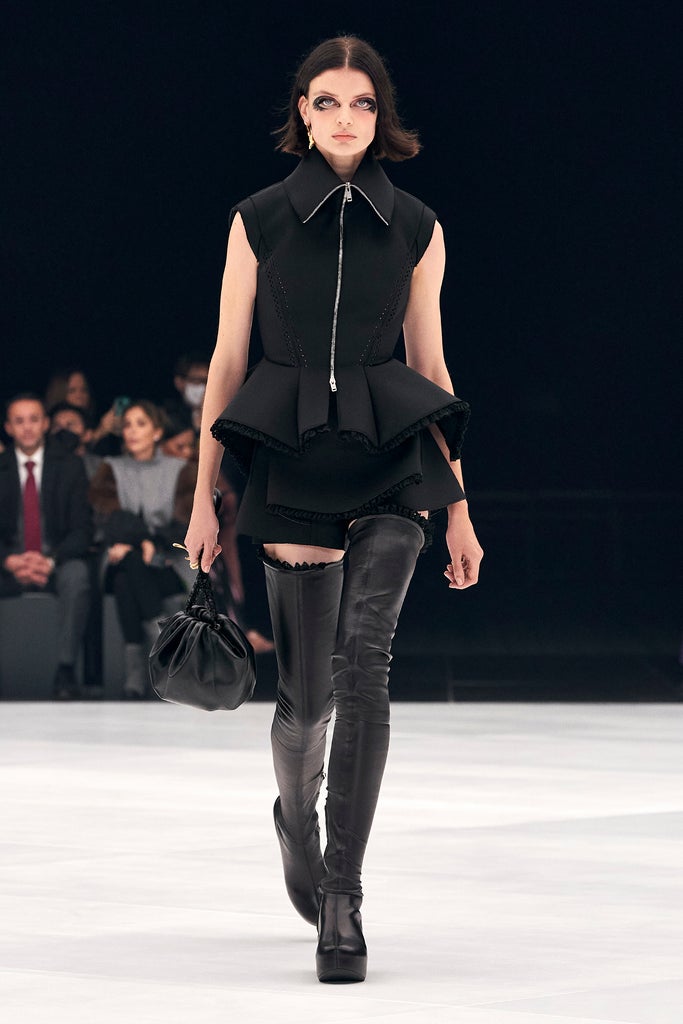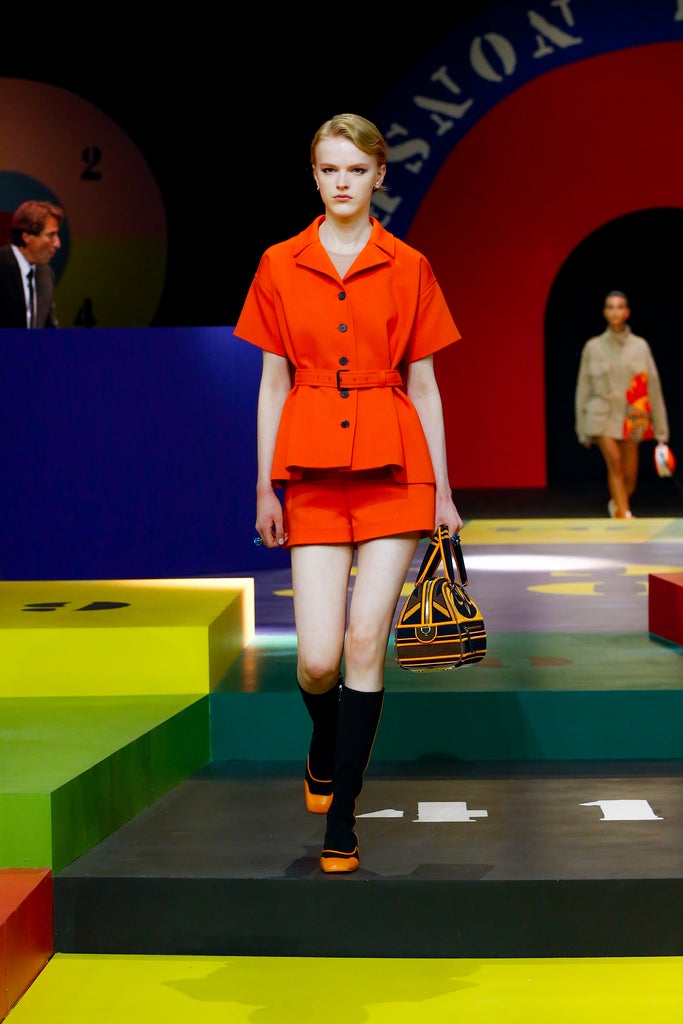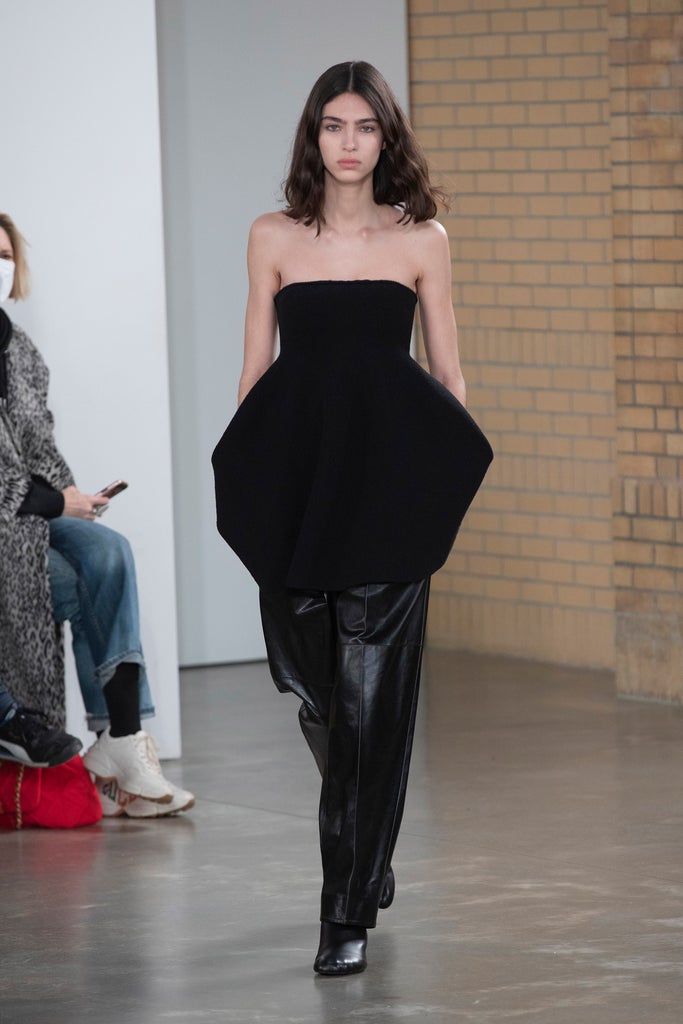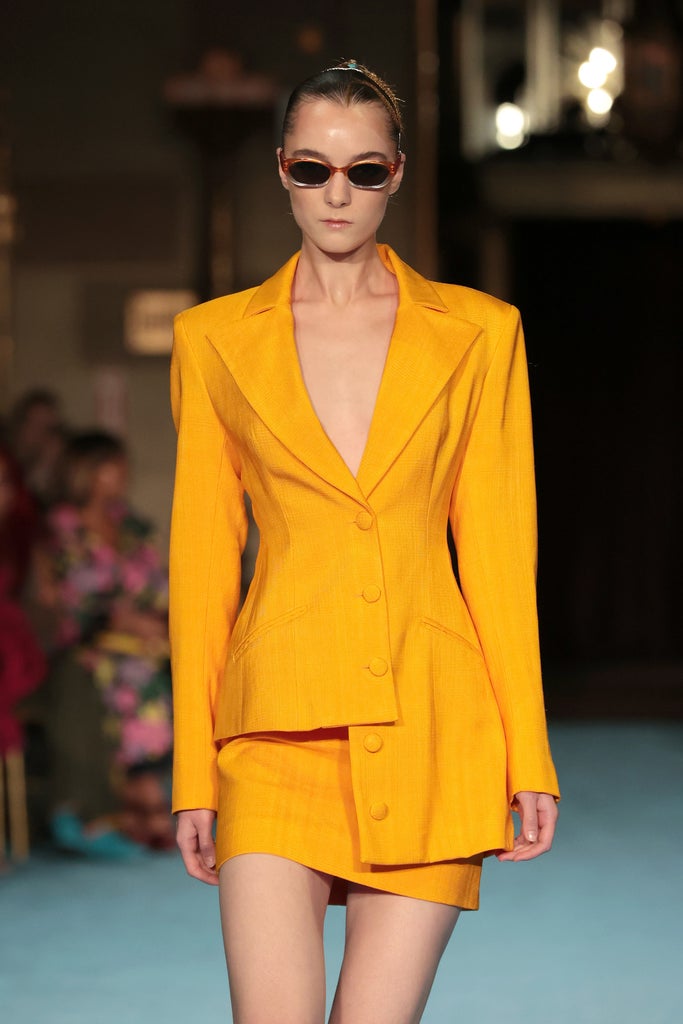Last week, Florence Pugh attended the London Critics’ Film Awards, wearing a red gown by Robert Wun Couture that featured one of 2010s defining trends: peplum. Boasting a minimalist skirt and a sweetheart neckline, the dress’ centerpiece was the voluminous waist detailing — a look that ensued polarizing takes all over social media. And it seems Pugh is not alone in endorsing the return of the look: Global fashion shopping platform Lyst has saw a 10% increase month-over-month in searches for peplum styles in 2022.
While Y2K styles have been dominating the fashion scene for almost two years now, the spring and fall 2022 runways proved that the trend cycle might be ready to move on. Looks from the 2010s, like colorblocking and high-low hemlines, made a big comeback for spring 2022, thanks to designers like Valentino and Giambattista Valli, before trickling down to street style. Last year, Nicole Kidman wore a custom Amarni Privé gown to the Oscars that featured a peplum detail. While the return of peplum has been slow, mounting evidence suggests it’s rapidly becoming a defining trend of 2023.


All that despite the fact that, when the 2010s ended just three years ago, the trend landed on almost every list of fashion styles we should leave behind. (Even Refinery29 called it one of the “15 Trends We’ll Live To Regret.”) Why has peplum gone down in history as a questionable trend at a time when even thong-revealing pants are on the rise?
When you think of peplum in 2010, you likely conjure images of tank tops featuring a heavy layer of stretchy cotton fabric that looked like a cross between a glorified sports bra and a business-casual shirt. From Coachella to the classroom, we mixed the cringe-y top, which came in every print known to humankind, with colorful chandelier necklaces, mullet skirts, and gladiator sandals. All to say: The on-the-verge-of-an-identity-crisis look was worlds away from the fashion-forward take we witnessed at the Oscars last month. Instead, it embodied a juvenile aesthetic that made it a staple of Disney star red carpet looks and a day of shopping at Forever 21.
While its most recent comeback might still give many nightmares, peplum’s history has a lot to show us about the resilience of the look.
“Peplum” — or “peplos” — is a Greek word for “tunic,” according to textile conservator Margaret O’Neill. It’s associated with Greco-Roman dress, known for its layered effect created through a heavy piece of fabric, folded over the upper edge of the tunic. Despite its roots, fashion historians mostly associated peplum with the 19th century, when styles of dress accentuated a “full hip,” according to O’Neill: “But they would not have called that a peplum.”
One of the first documented uses of the term is found in an 1860s issue of Godey’s Lady Book, an American women’s magazine published from 1830 to 1878, that showed bodices featuring curved hip extensions. In its early iterations, the peplum detailing was attached to an overskirt sewn onto the waist and, according to O’Neill, pointed — unlike most modern versions that are attached to the tops and appear to have a ruffled silhouette. It wasn’t until the 1930s and 1940s that the modern version became popular, with jackets being fitted at the waist and extending beyond the hips as an overskirt, as a result of the popularity of Christian Dior’s “New Look.” Soon after, peplum became attached to everything from dresses to tops and power suits.
Despite it being remembered as a cringe-y street style and music festival circuit trend, there were some notable examples in the early 2010s. Brands like Jil Sander, Peter Pilotto, and Alexander McQueen championed futuristic and geometric iterations on the runway with curvy overskirts, 3-D printed peplum tops, and asymmetrical peplum dresses.


This season, it’s Givenchy taking the lead. The spring 2022 collection by Matthew Williams featured peplum jackets as the lineup’s centerpiece with heavy zippers, as well as corseted mini dresses with layered details. Meanwhile, Christian Siriano opted for a more sleek look with monochrome pantsuits with asymmetrical elements on the jackets. Dior’s take reminded the fashion world of the peplum’s 20th-century origins with styles reminiscent of the house’s “New Look” silhouette, this time styled with mini skirts. For fall 2022, Proenza Schouler also played with this style, creating a peplum-looking dress by enlisting contrasting fabrics on strapless dresses, as well as pointy, voluminous bulges on long-sleeve tops.


While peplum is often thought of as a “love-to-hate” trend, its place in fashion history proves that it’s a look that isn’t going anywhere. I dare say, it’s a classic. “I think there is something to be said about women historically using peplum as a way to create that hourglass silhouette,” says O’Neill, adding that, while we may remember its recent popularity as a cringe-inducing trend, there’s a vast history of examples that show how sophisticated and timeless peplum can be.
To prove that, designers today are making sure that only the most innovative takes on the trends — from asymmetrical blazer hemlines to belted suits that embody a more grown-up aesthetic — make their way to our closets. And, more importantly, stay there for decades to come.
Like what you see? How about some more R29 goodness, right here?
Sorry To Report: High-Low Hemlines Are Back

No comments:
Post a Comment